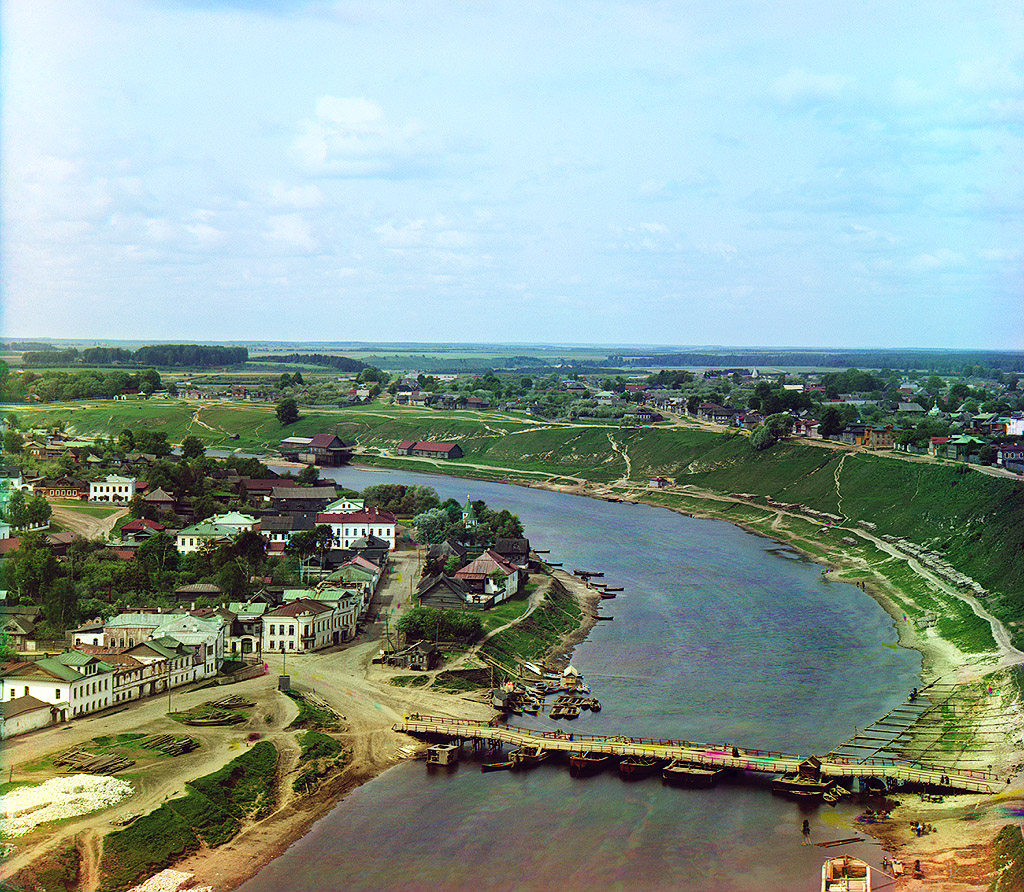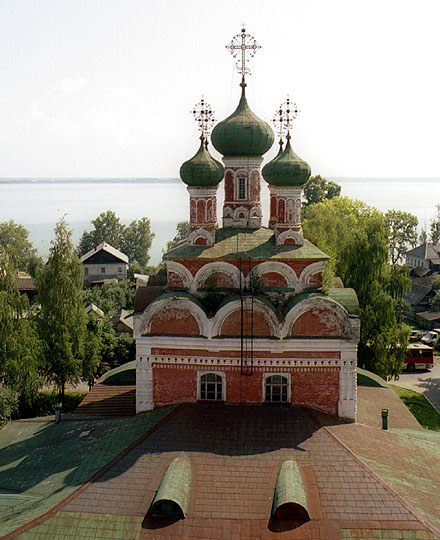|
Tver Governorate
Tver Governorate (russian: Тверская губерния, ''Tverskaya guberniya'') was an administrative division (a ''guberniya'') of the Russian Empire and Russian Socialist Federative Soviet Republic, Russian SFSR, which existed from 1796 until 1929. Its seat was in Tver. The governorate was located in the center of the European part of the Russian Empire and bordered Novgorod Governorate in the north, Yaroslavl Governorate in the east, Vladimir Governorate in the southeast, Moscow Governorate in the south, Smolensk Governorate in the southwest, and Pskov Governorate in the west. The area of the governorate is currently split between Tver Oblast, Tver and Moscow Oblasts. Minor parts of Tver Governorate also currently belong to Yaroslavl Oblast, Yaroslavl and Novgorod Oblasts. History In the 18th century, the areas which were later occupied by Tver Governorate were split between Moscow Governorate, Moscow and Novgorod Governorates. On 25 November 1775 Tver Viceroyalt ... [...More Info...] [...Related Items...] OR: [Wikipedia] [Google] [Baidu] |
Russian Empire
The Russian Empire was an empire and the final period of the Russian monarchy from 1721 to 1917, ruling across large parts of Eurasia. It succeeded the Tsardom of Russia following the Treaty of Nystad, which ended the Great Northern War. The rise of the Russian Empire coincided with the decline of neighbouring rival powers: the Swedish Empire, the Polish–Lithuanian Commonwealth, Qajar Iran, the Ottoman Empire, and Qing China. It also held colonies in North America between 1799 and 1867. Covering an area of approximately , it remains the third-largest empire in history, surpassed only by the British Empire and the Mongol Empire; it ruled over a population of 125.6 million people per the 1897 Russian census, which was the only census carried out during the entire imperial period. Owing to its geographic extent across three continents at its peak, it featured great ethnic, linguistic, religious, and economic diversity. From the 10th–17th centuries, the land ... [...More Info...] [...Related Items...] OR: [Wikipedia] [Google] [Baidu] |
Bezhetsky Uyezd
Bezhetsky Uyezd (''Бежецкий уезд'') was one of the subdivisions of the Tver Governorate of the Russian Empire. Its capital was Bezhetsk. Bezhetsky Uyezd was situated in the eastern part of the governorate (in the eastern part of the present-day Tver Oblast). The territory of Bezhetsky Uyezd corresponds to the present-day Bezhetsky District and parts of Maksatikhinsky, Molokovsky, Krasnokholmsky, Sonkovsky, Kesovogorsky, Kashinsky, Rameshkovsky and Likhoslavlsky districts, all of which are part of Tver Oblast. Demographics At the time of the Russian Empire Census of 1897, Bezhetsky Uyezd had a population of 247,952. Of these, 80.8% spoke Russian Russian(s) refers to anything related to Russia, including: *Russians (, ''russkiye''), an ethnic group of the East Slavic peoples, primarily living in Russia and neighboring countries *Rossiyane (), Russian language term for all citizens and peo ... and 19.0% Karelian as their native language. References Uezds ... [...More Info...] [...Related Items...] OR: [Wikipedia] [Google] [Baidu] |
Vyshnevolotsky Uyezd
Vyshnevolotsky Uyezd (''Вышневолоцкий уезд'') was one of the subdivisions of the Tver Governorate of the Russian Empire. It was situated in the northcentral part of the governorate. Its administrative centre was Vyshny Volochyok. Demographics At the time of the Russian Empire Census of 1897, Vyshnevolotsky Uyezd had a population of 179,141. Of these, 83.4% spoke Russian, 15.5% Karelian, 0.4% Estonian, 0.2% Yiddish, 0.1% German, 0.1% Latvian and 0.1% Romani Romani may refer to: Ethnicities * Romani people, an ethnic group of Northern Indian origin, living dispersed in Europe, the Americas and Asia ** Romani genocide, under Nazi rule * Romani language, any of several Indo-Aryan languages of the Roma ... as their native language. References Uezds of Tver Governorate Tver Governorate {{Russia-gov-stub ... [...More Info...] [...Related Items...] OR: [Wikipedia] [Google] [Baidu] |
Tverskoy Uyezd as their native language.Tverskoy Uyezd (''Тверской уезд'') was one of the subdivisions of the Tver Governorate of the Russian Empire. It was situated in the northeastern part of the governorate. Its administrative centre was Tver. Demographics At the time of the Russian Empire Census of 1897, Tverskoy Uyezd had a population of 166,905. Of these, 97.9% spoke Russian, 0.5% Polish, 0.4% Yiddish, 0.4% Ukrainian, 0.2% German, 0.1% Karelian and 0.1% Tatar The Tatars ()Tatar in the Collins English Dictionary is an umbrella term for different Демоскоп Weekly - Приложение. Справочник статистических показателей [...More Info...] [...Related Items...] OR: [Wikipedia] [Google] [Baidu] |
Staritsa (town), Tver Oblast
Staritsa (russian: Ста́рица) is a town and the administrative center of Staritsky District in Tver Oblast, Russia, located on the Volga River, from Tver, the administrative center of the oblast. Population: It was previously known as ''Gorodok'' (until the 15th century). History The town was established in 1297 under the name of Gorodok (), lit. ''small town''). In 1365, it was moved from the more elevated right to the lower left bank of the Volga River. Since the 15th century, the town has been called Staritsa (lit. ''former river-bed''). The name was misinterpreted by heraldists who represented on Staritsa's coat of arms an image of aged nun, which is another meaning of the Russian word "staritsa". In the 14th century, it belonged to the Principality of Zubtsov, which was eventually was merged back into the Principality of Tver. In 1485 it was formally annexed by the Grand Duchy of Moscow. The Golden Age of the town began. Between 1519 and 1597 the Principality of ... [...More Info...] [...Related Items...] OR: [Wikipedia] [Google] [Baidu] |
Staritsky Uyezd
Staritsky Uyezd (''Старицкий уезд'') was one of the subdivisions of the Tver Governorate of the Russian Empire. It was situated in the southcentral part of the governorate. Its administrative centre was Staritsa. Demographics At the time of the Russian Empire Census of 1897, Staritsky Uyezd had a population of 146,143. Of these, 99.8% spoke Russian Russian(s) refers to anything related to Russia, including: *Russians (, ''russkiye''), an ethnic group of the East Slavic peoples, primarily living in Russia and neighboring countries *Rossiyane (), Russian language term for all citizens and peo ... as their native language. Демоскоп Weekly - Приложение. Справочник статистических показателей References [...More Info...] [...Related Items...] OR: [Wikipedia] [Google] [Baidu] |
Rzhev
Rzhev ( rus, Ржев, p=ˈrʐɛf) is a types of inhabited localities in Russia, town in Tver Oblast, Russia, located southwest of Staritsa (town), Tver Oblast, Staritsa and from Tver, on the highway and railway connecting Moscow and Riga. It is the uppermost town situated on the Volga River. Population: History Rzhev was founded in the Middle Ages and rivals Toropets as the oldest town in the region. Rzhevians usually point out that their town is mentioned in the Novgorod Republic, Novgorod laws as early as 1019. Their neighbors from Toropets, on the other hand, give more credence to Rzhev's first mention in a major chronicle under 1216, when it was in possession of Mstislav the Bold, Prince of Toropets. Whatever the truth may be, it is clear that medieval Rzhev was bitterly contested by three regional powers—the Novgorod Republic, the Principality of Smolensk, and the Grand Principality of Vladimir-Suzdal. Following the Mongol invasion of Russia, Mongol invasion, Rzhev pa ... [...More Info...] [...Related Items...] OR: [Wikipedia] [Google] [Baidu] |
Rzhevsky Uyezd
Rzhevsky Uyezd (''Ржевский уезд'') was one of the subdivisions of the Tver Governorate of the Russian Empire. It was situated in the southwestern part of the governorate. Its administrative centre was Rzhev. Demographics At the time of the Russian Empire Census of 1897, Rzhevsky Uyezd had a population of 143,789. Of these, 99.3% spoke Russian, 0.2% Belarusian, 0.2% Polish, 0.1% Ukrainian, 0.1% Yiddish and 0.1% German German(s) may refer to: * Germany (of or related to) ** Germania (historical use) * Germans, citizens of Germany, people of German ancestry, or native speakers of the German language ** For citizens of Germany, see also German nationality law **Ge ... as their native language. Демоскоп Weekly - Приложение. Справочник статистических показателей References< ...
|
Ostashkov
Ostashkov (russian: Оста́шков) is a types of inhabited localities in Russia, town and the administrative center of Ostashkovsky District in Tver Oblast, Russia, on a peninsula at the southern shore of Lake Seliger, west of Tver, the administrative center of the oblast. Population: History Early developments The island of Klichen was first mentioned in a letter sent by Grand Duke Algirdas of Lithuania to the Ecumenical Patriarch of Constantinople in 1371. After the island was pillaged by ushkuiniks, Novgorod pirates several years later, two of Klichen's surviving inhabitants, Ostashko and Timofey, moved to the mainland, where they founded the villages Ostashkovo and Timofeyevo, respectively. The former belonged to the Patriarch of Moscow and all Rus', Moscow Patriarchs, and the latter—to the Joseph-Volokolamsk Monastery. In 1770, both villages were merged into the town of Ostashkov. Ostashkov is commonly regarded as one of the finest Russian provincial towns. Its mai ... [...More Info...] [...Related Items...] OR: [Wikipedia] [Google] [Baidu] |
Ostashkovsky Uyezd
Ostashkovsky Uyezd (''Осташковский уезд'') was one of the subdivisions of the Tver Governorate of the Russian Empire. It was situated in the southwestern part of the governorate. Its administrative centre was Ostashkov. Demographics At the time of the Russian Empire Census of 1897, Ostashkovsky Uyezd had a population of 130,161. Of these, 98.8% spoke Russian Russian(s) refers to anything related to Russia, including: *Russians (, ''russkiye''), an ethnic group of the East Slavic peoples, primarily living in Russia and neighboring countries *Rossiyane (), Russian language term for all citizens and peo ..., 0.5% Karelian, 0.4% Estonian and 0.1% Latvian as their native language. References Uezds of Tver Governorate Tver Governorate {{Russia-gov-stub ... [...More Info...] [...Related Items...] OR: [Wikipedia] [Google] [Baidu] |
Torzhok
Torzhok (russian: Торжо́к) is a town in Tver Oblast, Russia, located on the Tvertsa River along the federal highway M10 and a branch of the Oktyabrskaya Railway division of the Russian Railways. The town is famous for its folk craft of goldwork embroidery. Population: History Torzhok was first mentioned in a chronicle in 1139 as Novy Torg. The Mongols burned it in 1238, but did not proceed northward to Novgorod. At that time, the town commanded the only route whereby grain was delivered to Novgorod. Once Torzhok blocked the route, a great shortage of grain and famine in Novgorod would follow. Consequently, Torzhok was known as a key to the Novgorod Republic and frequently changed hands during feudal internecine wars. The town was incorporated into the Grand Duchy of Moscow with the rest of the Novgorod Republic in 1478. The armies of a Sigmund the III of Poland frequently ravaged it during the Time of Troubles. During the imperial period, Torzhok was known as an imp ... [...More Info...] [...Related Items...] OR: [Wikipedia] [Google] [Baidu] |
Novotorzhsky Uyezd
Novotorzhsky Uyezd was an administrative-territorial unit (uyezd) of the Tver Governorate as part of the Russian Empire and the Russian Soviet Federative Socialist Republic. The uyezd town was Torzhok. Geography The county was located in the central part of the Tver Governorate. The area of the uyezd was 4,602.4 square versts. The surface of the uyezd was a flat hill, gradually descending from the northwest to the southeast. A branch of the Valdai Mountains enters the uyezd from the west, forming a marshy hill, from which the county river originates (Osuga, Big Kosh and others). The main river – Tvertsa, crosses the uyezd for 97 versts; the following fall into Tvertsa: Osuga (125 versts) with Poved (74 versts), Logovyazh (63 versts) and others. In the northeast along the border of the uyezd is Medveditsa (15 versts), in the south – Tma (25 versts), in the west – Bolshaya Kosha (25 versts), the last three flow into the Volga outside the uyezd. Only Tvertsa is navigable, ra ... [...More Info...] [...Related Items...] OR: [Wikipedia] [Google] [Baidu] |





